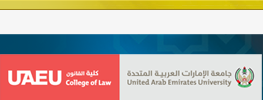Abstract
The subject of this paper is of paramount importance because the understanding of the texts of Islamic laws and deduction of provisions therefrom must be undertaken in accordance with systematic controls that help protect researchers and scholars from deviation in reasoning and deduction, and from falling into errors.
To correctly understand, interpret and hence apply such legal texts, these controls must be carefully observed. This paper presents seven such controls and outlines the rules and provisions pertaining to each.
(1) Ascertainment of the authenticity of the text on which a verdict is to be based. This control applies to Al-Ahad, i.e. the Prophet’s sayings reported by only one of his comrades (Sahabah) only, because the Quran, and the sayings reported by more than one of the Prophet’s comrades (motawaterah) are utterly authentic.
(2) The text to be studied and consequently used for deduction purposes must be compared with other relevant Quranic and Prophetic texts. The mutual influence of such texts must be examined, especially with regard to their individual significance. Any apparent contradiction must be noted, and the comparison should ultimately lead to the most viable opinion.
(3) The words used in the text must be carefully examined to detect all possible denotations and implications in order to reach sound understanding of the text. Islamic legal texts had been spelled out in Arabic. It is therefore imperative that the words of such texts should be interpreted against an Arabic background and in light of the rules of Arabic grammar and also in light of their linguistic, legal and traditional denotations.
(4) Texts should be interpreted and understood in light of the significance of their original cause of revealing or occurrence. Many of these texts came into being on specific occasions and for specific reasons, and such a background must be taken into consideration in applying them to present-day situations. Knowledge of the cause generates knowledge of the effect.
(5) Texts should be comprehended in light of the significance of their own context. Words must be related to the entire context in which they occur. They should not be cut off from preceding or subsequent words. By so doing, the text becomes major evidence supporting speaker’s intent. However, significance of the context should not be confused with significance or revealing or occurrence; the context certainly influences the text and its meaning(s), while the cause of revealing or occurrence (while helping understand the text) has no impact on the text and meaning(s) thereof.
(6) The text has top be 8undertstood and interpreted in light of their nature of the stage, reality, place and time circumstances. This helps reach good understanding of the text and the viability of its application i9n reality. Time and place may affect verdicts, situations, decisions, objectives and strategies. Thus, they may alter probabilities and invert situations. Consideration of a stage in accordance with time and placer factors had prompted scholars, from the time of the Prophet’s Comrades (Sahaba) till now, to change and amend rulings with the change of time, place, conditions, circumstances and traditions.
(7) Texts must be understood in light of the original intent of the Legislator, namely the protection of the total interests of people: their religion, their selves, their minds, their offshoot, and their monies. Therefore, scholars and researchers examining texts with a view to understanding and interpretation thereof musty juxtapose partial texts with the general intent and total rules of Shariaa, so that the verdict may be soundly based on both generalities and particularities relevant to the subject of the text and significance thereof.
As a whole, these seven controls constitute a framework for dealing systematically with legal Islamic texts, and the appropriate application thereof to day-to-day cases and occurrences.
Recommended Citation
(2003)
"Systematic controls for inferring legal texts,"
UAEU Law Journal: Vol. 2003:
No.
19, Article 1.
Available at:
https://scholarworks.uaeu.ac.ae/sharia_and_law/vol2003/iss19/1

